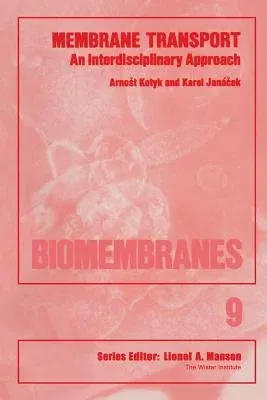Arnost Kotyk
(Author)Membrane Transport: An Interdisciplinary Approach (Softcover Reprint of the Original 1st 1977)Paperback - Softcover Reprint of the Original 1st 1977, 15 April 2012

Qty
1
Turbo
Ships in 2 - 3 days
In Stock
Free Delivery
Cash on Delivery
15 Days
Free Returns
Secure Checkout
Part of Series
Biomembranes
Print Length
348 pages
Language
English
Publisher
Springer
Date Published
15 Apr 2012
ISBN-10
1468433350
ISBN-13
9781468433357
Description
Product Details
Author:
Book Edition:
Softcover Reprint of the Original 1st 1977
Book Format:
Paperback
Country of Origin:
NL
Date Published:
15 April 2012
Dimensions:
22.86 x
15.24 x
1.85 cm
ISBN-10:
1468433350
ISBN-13:
9781468433357
Language:
English
Location:
New York, NY
Pages:
348
Publisher:
Series:
Weight:
471.74 gm

